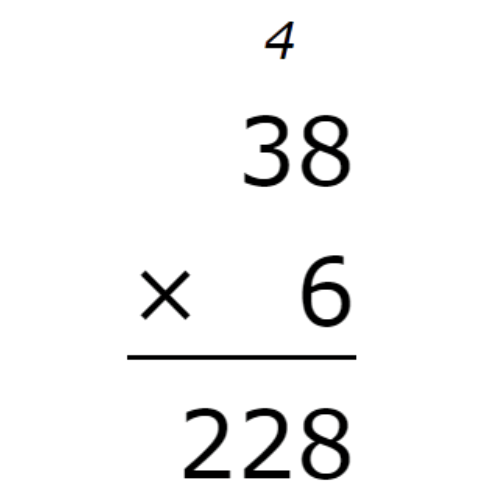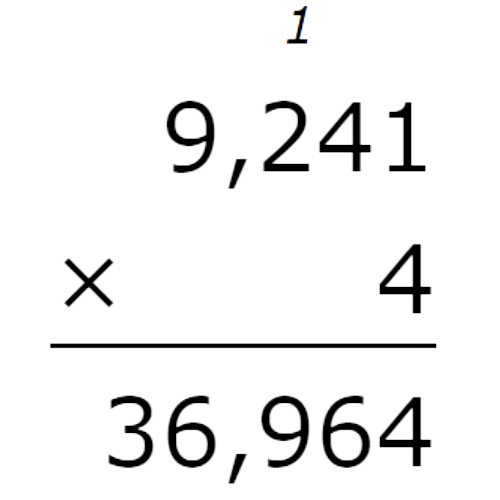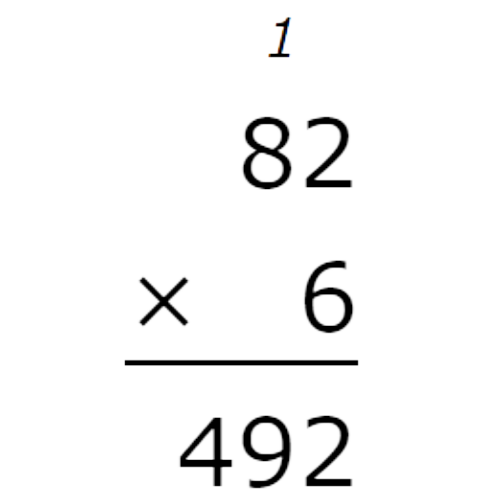Multiply whole numbers: word problems
key notes:
| What are Word Problems? |
Word problems are real-life math situations written in words.
They require reading, understanding, and solving using operations like multiplication.
| 🧠 Strategy to Solve Word Problems |
🔢 Use these 4 steps (R-U-S-E):
| Step | What to Do |
|---|---|
| R – Read | Read the problem carefully. |
| U – Understand | Find what is given and what is asked. |
| S – Solve | Choose the correct operation (here: multiplication). |
| E – Explain | Write the final answer with units. |
| Read the Problem Carefully: |
- Identify and underline the numbers and keywords.
- Determine what is being asked and the operation needed.
| Identify Keywords: |
- Words like “total,” “each,” “per,” and “in all” often indicate multiplication.
| Break Down the Problem: |
- Convert the word problem into a mathematical expression or equation.
- Identify the multiplicand (number to be multiplied) and the multiplier (number by which to multiply).
| Set Up the Multiplication: |
- Write down the numbers to be multiplied.
- Choose the appropriate multiplication method (e.g., column method, grid method).
| Solve the Problem: |
- Perform the multiplication.
- Double-check calculations for accuracy.
| Write the Answer: |
- Ensure the answer is in the context of the problem.
- Include units (e.g., dollars, items, etc.) if applicable.
| Check the Reasonableness: |
- Estimate the result to ensure it makes sense with the problem’s context.
- Reevaluate if the answer seems unreasonable or incorrect.
| 🔍 Clue Words for Multiplication |
These words in a word problem often mean you need to multiply:
- Each
- In all
- Altogether
- Times
- Every
- Total
| 🧮 Examples with Step-by-Step Solution |
| ✨ Example 1: |
Example 2 – Mangoes:
A farmer has 35 mango trees. Each tree produces 120 mangoes.
- 35×120=4200
✅ Answer: 4200 mangoes
| ✨ Example 2: |
Q: One packet contains 45 biscuits. How many biscuits are in 18 packets?
🔹 45 × 18 =
45
× 18
------
360 ← (45 × 8)
+450 ← (45 × 10)
------
810
✅ Answer: 810 biscuits
| ✨ Example 3 (Multi-step): |
Q: A classroom has 24 desks. Each desk has 2 students. There are 5 classrooms.
How many students are there in total?
Step 1: 24 desks × 2 students = 48 students per classroom
Step 2: 48 × 5 classrooms = 240 students
✅ Answer: 240 students in all
| Example Problem: |
Problem: A school is organizing a field trip for 8 classes. Each class has 25 students. How many students are going on the field trip in total?

Solution Steps:
- Read the Problem: Identify the number of classes and students per class.
- Keywords: “total” and “each” indicate multiplication.
- Break Down:
- Multiplicand: 25 (students per class)
- Multiplier: 8 (number of classes)
- Set Up the Multiplication: 25 × 8
- Solve:
- (25 times 8 = 200)
- Write the Answer: There are 200 students going on the field trip.
- Check Reasonableness: Estimate: 20 × 8 = 160; 200 is a reasonable result.
| 📝 Practice Problems (Try Yourself) |
- One book costs ₹65. What is the cost of 18 books?
- A box contains 48 chocolates. How many chocolates are in 13 boxes?
- There are 24 chairs in one hall. How many chairs in 15 such halls?
- A factory produces 275 bottles a day. How many bottles in 6 days?
- A packet has 8 pencils. How many pencils in 125 packets?
Learn with an example
🗼 Carson made 6 pans of brownies. He cut each pan into 38 brownies.
How many brownies did Carson end up with?
______ brownies
There were 6 pans, each of which was cut into 38 brownies. Multiply:

Carson ended up with 228 brownies.
🗼 A soda company makes 4 kinds of soda. A grocery store chain ordered 9,241 bottles of each kind of soda.
How many bottles of soda in total did the grocery store chain order?
_____ bottles of soda
There are 4 kinds of soda, and the store ordered 9,241 bottles of each. Multiply:

The grocery store chain ordered 36,964 bottles of soda.
🗼 A carpet store has 6 commercials every hour on a local television station.
How many commercials will the store have in 82 hours?
_______ commercials
There are 82 hours, each of which has 6 commercials. Multiply:

The store shows 492 commercials in 82 hours.
Let’s practice!🖊️

